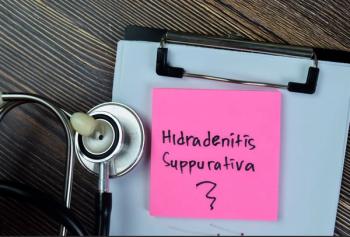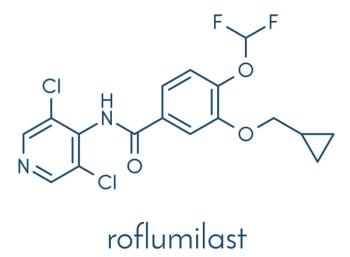
Enoxaparin Dermatosis
This is a very distinct, rare, and remarkable hemorrhagic rash, first recognized in 2006, with 7 known cases reported in the literature.
A 68-year-old woman with a history of chronic obstructive pulmonary disease, hypertension, and atrial fibrillation presented with a new embolic stroke. History revealed that she had been nonadherent to her anticoagulation therapy (rivaroxaban). Anticoagulation was initiated with warfarin. She was being bridged with enoxaparin subcutaneous injections in the upper extremities.
Four days after she began enoxaparin, a tender, firm, hemorrhagic vesicular rash, ranging from 0.1 to 0.8 cm, developed on her calves bilaterally (Figure 1). The rash bled with minimal trauma and dried into crusted scabs. These lesions were distant from the enoxaparin injection sites on her upper arms.
Laboratory results included: hemoglobin, normal; leukocytes, 19×109/L; platelets, 353,000/µL; prothrombin time, 21.8; INR 1.8.
Differential diagnoses considered were leukocytoclastic vasculitis, warfarin-induced necrosis, bedbug bites, enoxaparin dermatosis.
A shave biopsy specimen was obtained for histopathologic examination. It showed noninflammatory subepidermal bullae consistent with bullous hemorrhagic dermatosis (Figure 2). There was no evidence of leukocytoclastic vasculitis. No thrombosis was seen as might have been evident in warfarin-induced necrosis. This is consistent with enoxaparin dermatosis.
This is a very distinct, rare, and remarkable hemorrhagic rash,
The exact cause is unknown.
References:
Naveen KN, Rai V.
Peña ZG, Suszko JW, Morrison LH.
Perrinaud A, Jacobi D, Machet MC, et al.
Villanuevaa CA, Nájerab L, Espinosaa P, Borbujoa J.
Newsletter
Enhance your clinical practice with the Patient Care newsletter, offering the latest evidence-based guidelines, diagnostic insights, and treatment strategies for primary care physicians.



















































































































































































































































































